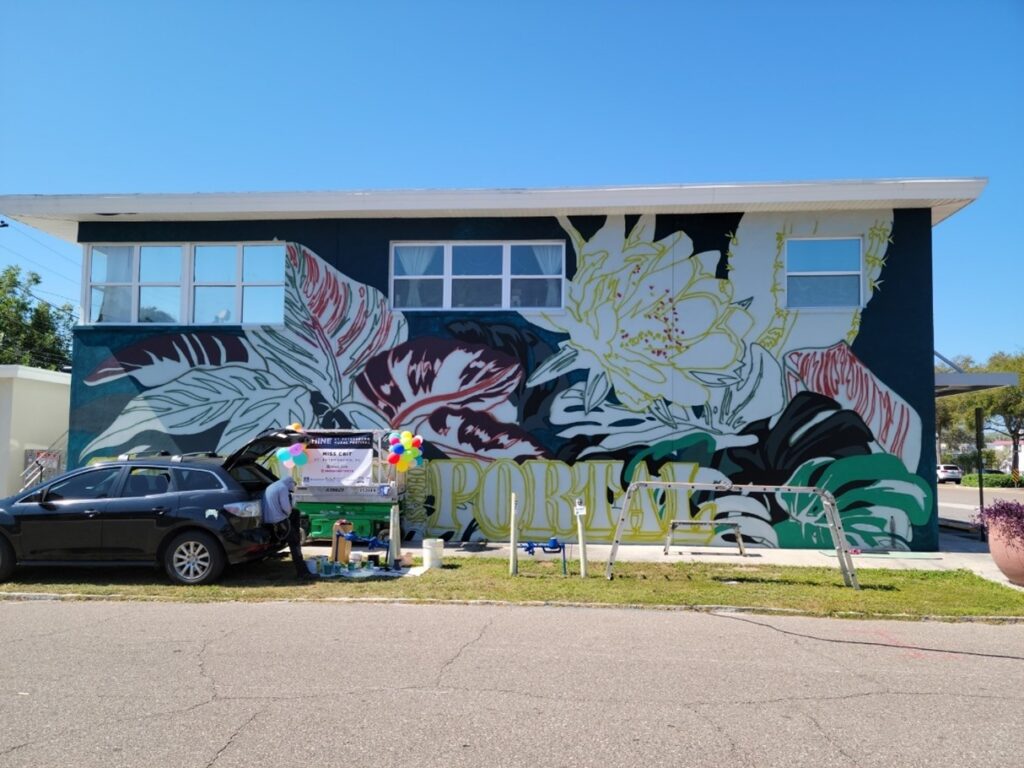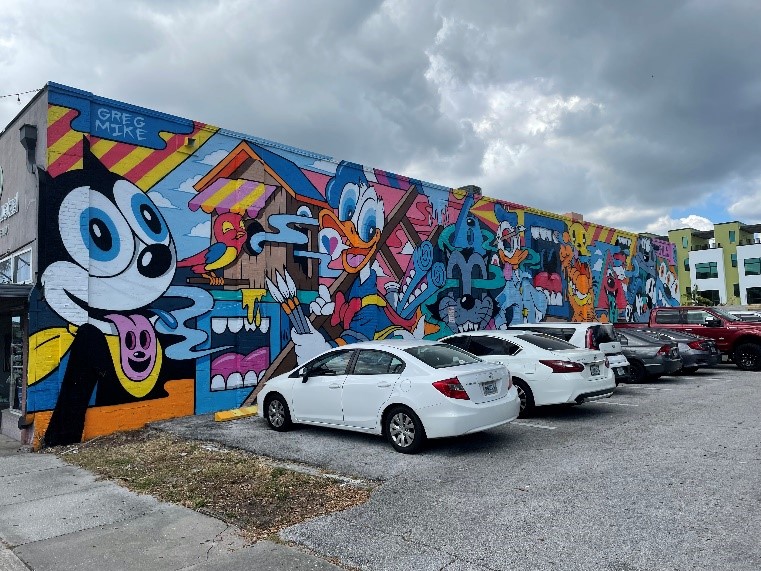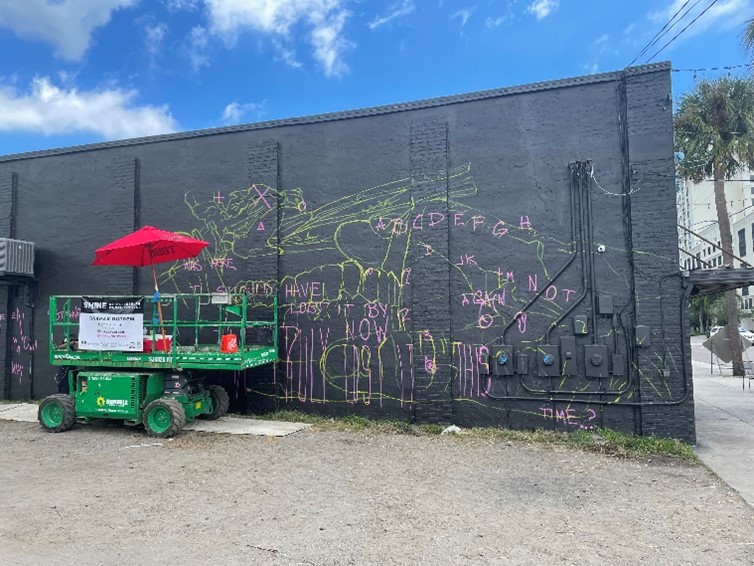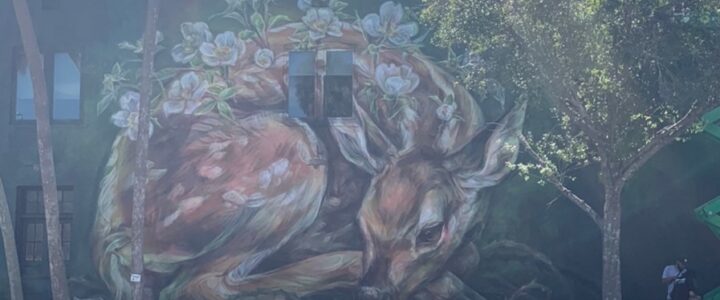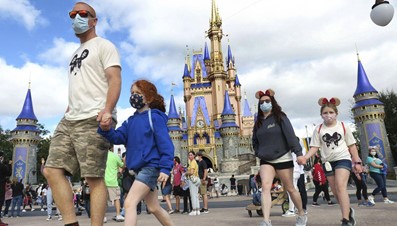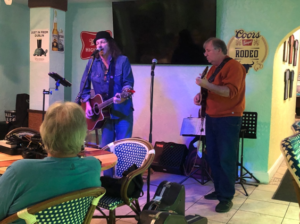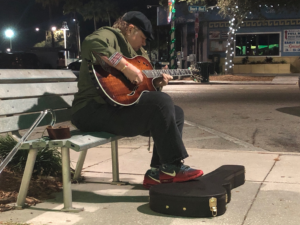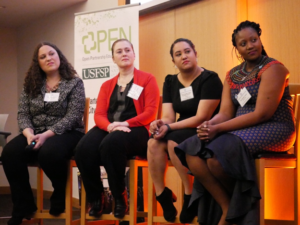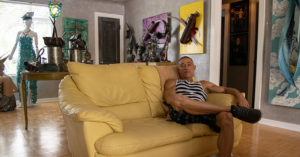With a shovel and determination, volunteer Vanessa Gray uncovers forgotten graves in long-neglected black cemetery
Love grows: The future of urban farming in St. Petersburg
By Lauren Wood

In the heart of the Grand Central Arts and Warehouse Districts lies a 48-acre farm that grows and harvests crops 365 days a year — all within a few hydroponic shipping containers.
What was once an idea in an overrun junkyard on the corner of 2001 2nd Ave. S in St. Petersburg is now the future home to Brick Street Farms’ hubs. This urban farmstead focuses on the future of food security, food safety and ecological sustainability.
“The market here is pretty special because not only do we have fresh produce that is from our farms on-site, but we also have a lot of local produce as well,” Jonathan “Jonny” Cheng said.
Cheng has been with Brick Street Farms as a farm support specialist since February. Over the summer, he got his master’s degree from the University of South Florida (USF) in food sustainability and security. Still, he wishes to stay with Brick Street Farms as the company expands.
“I’m hoping that we can possibly teach about [hydroponics] in the future to lower-income areas and kind of help those communities have their own sustainable food,” Cheng said.
In 2016, owners Shannon O’Malley and Brad Doyle purchased the industrial-zoned lot with hopes to provide locally-sourced and health-conscience foods to St. Petersburg. Now, they are expanding to other areas in Tampa Bay and have partnered with larger vendors to offer an adequate farm-to-table experience for consumers.
According to O’Malley, in January 2020, Brick Street Farms sold 12 times its projected volume at its test site at a Publix Supermarket in Lakeland. This encouraged O’Malley and Doyle to open other locations in the area, including their newly-renovated home base in St. Petersburg, which will open in 2022.
A “first look” rendering of Brick Street Farms’ urban-cultivation hub was revealed in October, with promises to incorporate solar energy and smart energy management in the new model. As a result, this will help Brick Street Farms gain the most out of their non-carbon-generating electricity sources.
“These systems will be able to determine the most efficient, least carbon impact power source at any given time, choosing between the electric utility, on-site solar power with battery storage and on-site natural gas generator,” Brick Street Farms wrote in an Instagram post.
Currently, Brick Street Farms is situated at 2233 3rd Ave. S in St. Petersburg with 16 individual hydroponic farms. All pods were carefully designed to grow produce, control energy sources and minimize the carbon footprint.
Each Controlled Environment Agriculture (CEA) container holds approximately 2-3 acres of farmland, with arugula, spinach, basil, mixed kale and 40 other herbs and vegetables. However, all produce is non-GMO and grown without soil, which means there is no pesticide, insecticide or the possibility of soil-borne contamination.
“What CEA does for us is it gives us mitigation against climate change. Obviously, our farmers are struggling, we’ve got crazy weather patterns, but now we can control that interior environment,” said Dr. Brooke Hansen, a sustainability-focused anthropologist from USF who specializes in food tourism, waste management and farming.
Hansen believes that urban farming and agriculture can potentially divert greenhouse gas, waste and hunger issues while simultaneously providing citizens with locally produced, nutritious and healthy foods.
“I don’t think it’s the be-all, end-all solution everywhere. I think it’s one part of a multifaceted solution package that needs to include community gardens, regenerative agriculture, you know, actually in the ground, promoting soil biodiversity, but it’s one of many solutions,” Hansen said. “It allows us to grow food in places where we normally couldn’t, i.e. a parking lot in St. Petersburg. I love that. It’s a farm, and it’s truly amazing.”
Learn more about Brick Street Farms and shop its online store at BrickStreetFarms.com.


